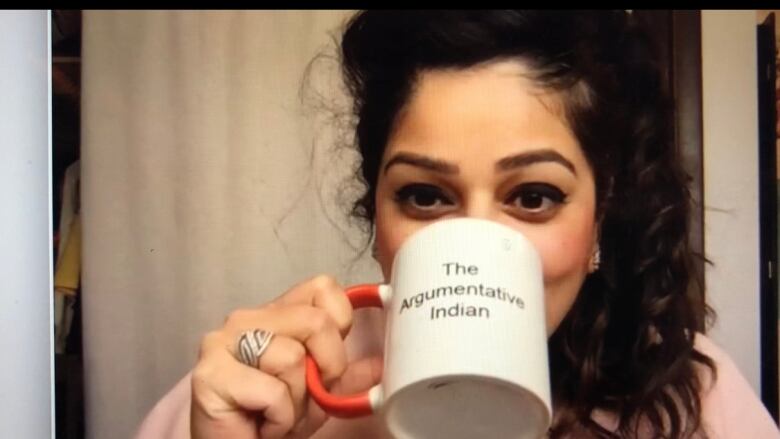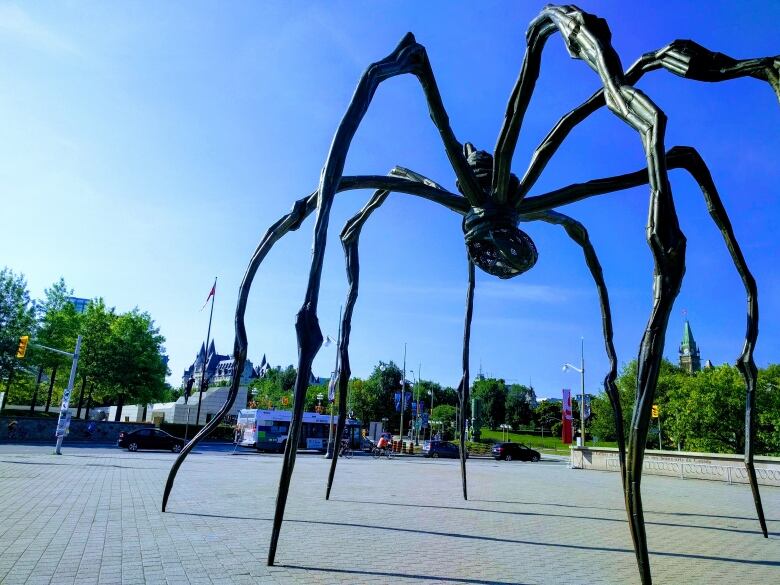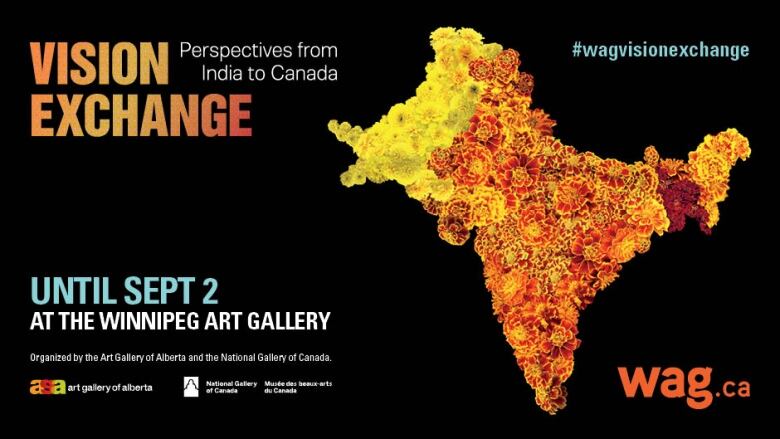'Oh my gosh! That would be bananas' 5 questions for Winnipeg artist Divya Mehra
Afterlife of Colonialism, with inflatable Taj Mahal at WAG, is a cheeky check on cultural artifact

Divya Mehra is one of Canada's young, vibrant artists and a trailblazer in the art world. She's also from Winnipeg.
Using mediums like sculpture, print, drawing, video, film and large-scale installations, Mehraoften uses humour as a segue into tougher conversations with her art. She engages the audience quite wittingly into a dialogue about the effects of colonization and discrimination. It'stough stuff to have a conversation about today.
In May, the Winnipeg Art Gallery opened Vision Exchange, the largest exhibition of its kind featuring 20 contemporary artists from India and artists of Indian heritage living in Canada. CBC Manitoba is a media sponsor of the exhibition and Mehra's latest piece, a large-scale inflatable Taj Mahal, is one of the central pieces.
Catching up with her over the phone from her studio inWinnipeg,CBC Manitoba talked with Mehra to talk about her work, what inspires her, and what's next.
Here are our five questions with Divya Mehra.
Why do you want humour to be the entry point for your art?
"Humour everyone can understand in some sense," said Mehra. "It creates space because it's really the most accessible thing and so that becomes the pathway into my work."
"So for the Taj Mahal I was asking myself what does it mean to stand in front of this famous cultural artifact that's actually a mausoleum and then you take a photo of it in such a way as to balance your finger on one of the minarets," said Mehra.
"How do we talk about that?"said Mehra. "I wanted to present the idea as a bouncy castle for people to interact with the juxtaposition.
For Mehra, she hopes that people will really consider this historical object on a minute-to-minute basis and how its imagery is functioning for the Indian diaspora.
What makes WAG's Taj Mahal different than other installations?
"Originally, space was made only slightly larger than the Taj Mahal installation at the first gallery and then it took on a different meaning at the Art Gallery of Alberta,'' said Mehra.
Each time Mehra's inflatable Taj Mahal moves it takes on a new interpretation depending on the gallery it's housed within. The accompanying didactic chronicles Mehra's journey installing her artwork in galleries all over the globe.
"When [it] came to the WAG and within the context of a gallery housing a whole bunch of white, male painters and I was like, 'oh, this is a hilarious opportunity to present the piece.'
Again, humour bubbles through.
"Writing artist statements is something I did overand over again in undergrad, because of that repetition, I actively do not write them any longer; but I do enjoy writing longer titles that speak to the work in a less didactic manner,"remarked Mehra.
Your art is on display in your home city at the WAG.When will you go visit it?
"Usually after install at a gallery or museum, I don't have the option to hang around and see and visit my own work. With Vision Exchange traveling to Winnipeg and the WAG, it's a really special situation that would definitely allow me to go again and again. . .but aside from the opening, I'm not keen on going back all the time to hang around my work, potentially overhearing what people may say like'Oh you can't jump onit!'", said Mehra.
How does that make you feel?
"Oh my gosh that would be bananas,"laughed Mehra. "Hearing people talk about your work all day? That would be too much. I can't do that."
You get the sense that her art is deeply personal and that she would feel vulnerable to be present while people react to her art.

Where will the Taj Mahal end up after the Vision Exchange exhibition closes?
"I'm excited to say that the National Gallery of Canada has acquired my piece and it will become part of the gallery'spermanent collection," said Mehra.
"After the WAG: Vision Exchange closes in September my installation will travel to the MacKenzieArt Gallery in Regina and finally to the NGC where it will remain until the fall of 2020.

How does having your art on permanent collection further the conversations your work has with Canadians?
"Wow, I mean it's a huge honour," Mehra said. "Being part of the permanent collection in Canada's national gallery is very significant for me as a contemporary artist. It means more space is being considered for racialized artists and that's important."
Mehra sees investing in contemporary, racialized artists as innovative and forward-thinking. It means that institutions housing art in this country are asking Canadians to find entry points to conversations that can be challenging, but are also necessary if we're to find a common understanding.
About this article:
Seeking to reflect the diverse experiences of those who live in the places we report on, the local marketing and communications team for CBC Manitoba is always on the lookout for new and innovative ways to take the public broadcaster into communities and grow audiences. CBC Manitoba is the media sponsor of Vision Exchange - the Winnipeg Art Gallery's first exhibition to feature artists from India and artists with Indian heritage living in Canada. It is the largest work of its kind presented in Manitoba.
Do you have something big up your sleeves that the local public broadcaster should sponsor? Drop us a line at communications.winnipeg@cbc.ca












_(720p).jpg)


 OFFICIAL HD MUSIC VIDEO.jpg)
.jpg)



























































































